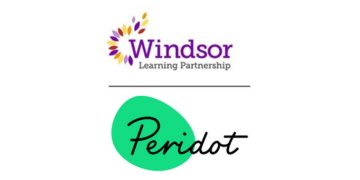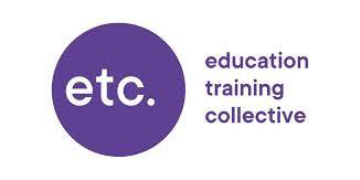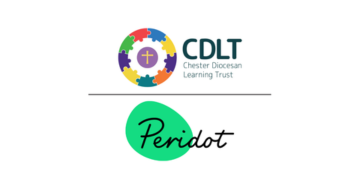When the curriculum and assessment review was announced, Professor Becky Francis singled out art and design’s supposed decline as an example of an educational myth. However, it would be complacent to say that the subject is thriving.
On the face of it, GCSE entry data for the subject is relatively stable. As the review’s interim report points out, it remains among the most popular subjects for take-up at GCSE.
Art and design is certainly popular, but the reality is that children are getting less of it across the board, and the quality and relevance of provision are in serious decline.
Indeed, the focus on GCSE data as the litmus test for the subject’s health and resilience is a major flaw in the review’s analysis. The ‘stable’ take-up figures conceal a more worrying trend. Since 2019, entries for GCSE design and technology (D&T) have fallen to catastrophic levels.
At the same time, we have seen a migration to art and design specialisms in those areas that were previously served by this GCSE. A shift towards art graphics, 3D design and textiles, has been coupled with a shift away from fine art and the broader art, craft and design GCSE.
This shift is not reflected in what we are seeing in many art and design classrooms, where the curriculum has gone flat. Research reveals a huge reduction in exposure to three-dimensional materials, techniques, processes and ways of thinking.
Art and design isn’t thriving; some of it has just moved to D&T workshops – masking the very real decline in both subjects.
The equity gap
Some of the challenges for art and design appear to be well understood. In particular, the curriculum does not represent and include all learners or speak to their interests and aspiration.
With a curriculum that lacks ambition (where the so-called ‘great artists’ take centre stage), the best schools have got better while everyone else has got lost. This is the equity gap through which too many children are falling.
The impact of reduced time, resources and teacher confidence also mean that too many children do not see themselves in the curriculum – not in the work that they are doing or the artists that they are learning about.
The reality gap
Meanwhile, too many schools are increasingly focused on learning about materials and techniques and away from creativity and real-world practice.
Students need to develop digital, AI and green design skills, but the current national curriculum looks to the past and does not help teachers prepare them to navigate the world they are growing up in.
The skills gap
There are other gaps to address. A key priority for the review must be to define how knowledge differs from other subjects.
Art, craft and design are rich in knowledge, and not all of it is pre-determined. Mastery learning in art and design is not the same as in other academic subjects. It is not about achieving a fixed point and moving on; it is a continuous process of practice, reflection and engagement. This is the key to a genuinely inclusive curriculum.
The policy gap
The panel have committed to working with the sector during this next phase to better understand the nuanced position of each subject. This must translate into an opportunity to address the weaknesses of a poorly defined, backwards-facing curriculum and create something that has meaning and relevance for all learners.
However, policy must go deeper as a result of the health check offered by this review, because not all problems can be solved through curriculum alone.
Learning in the arts and design operates within a careful balance between adequate time, resources and specialist teaching and good curriculum design. This patchwork includes extra-curricular provision, which provides essential routes for learners to engage at a deeper level and pursue their passions.
Some of these aspects may be out of the review’s scope, but they are inextricably linked.
So the curriculum review has the potential to be a useful first step, but ministers will need to have capacity, time, and the stomach for a genuine whole-system review if we are to see art, craft and design genuinely thrive.
This article is the latest in our series of sector-led, experience-informed recommendations for the Francis review of curriculum and assessment. Read them all here










Great article that highlights the issues in our classrooms today – a whole generation literally loosing touch with making – art, craft, design, any hand building subjects
The panel do need to work further within the sector. There is a need to cast the net around key people within visual
Art education. Art is fortunate to have two subject associations, Music has four. I hope they ALL become a part of consultations. Teachers voices count.
Well summarised, Michele. Only ambitious systems-thinking can bridge these identified gaps. Education is an interconnected system of sectors, society, and other stakeholders. While the CAR should aim to ignite opportunities for evolutionary change in art classrooms, it is very difficult to see how action on curricular content and progress measures (in isolation) can shift the dial on the reproductive tendencies of arts education. In concert, work is required to recentre disciplinary epistemologies in ITE, re-calibrate the metrics of OfSTED, reactivate art teacher agency, and rebut normative sociopolitical narratives that promote a one-dimensional, technocratic educational rationale with solely economic ends.
That is a powerful and insightful perspective, Will. This kind of transformative thinking requires both courage and collaboration.
I have consistently advocated for systemic change in arts education, emphasising the need for diverse leadership, inclusivity, and anti-racist practices. Equity should be embedded into educational frameworks rather than treated as an afterthought.
Meaningful implementation requires a multi-layered approach—one that integrates curricular reform, teacher agency, and structural policy shifts.
Ten years ago, in 2015, NSEAD undertook the largest subject-specific survey to date – it was a health check on our subject. It showed the impact of policies on on the curriculum; on the value placed on our subject, and on the wellbeing of teachers of art and design. NSEAD predicted the arts education pipeline was under pressure and would break. It did break, but much quicker than we expected – and we’re yet see its repair. Instead, as helpfully described in this article, we’re seeing a widening of the gaps – in skills, in equity and in access to a rich and broad arts education. With the CAR review in sight, policy makers have opportunity now to repair and rebuild the arts in schools. As Michele says, now is definitely the time to close the art gap.